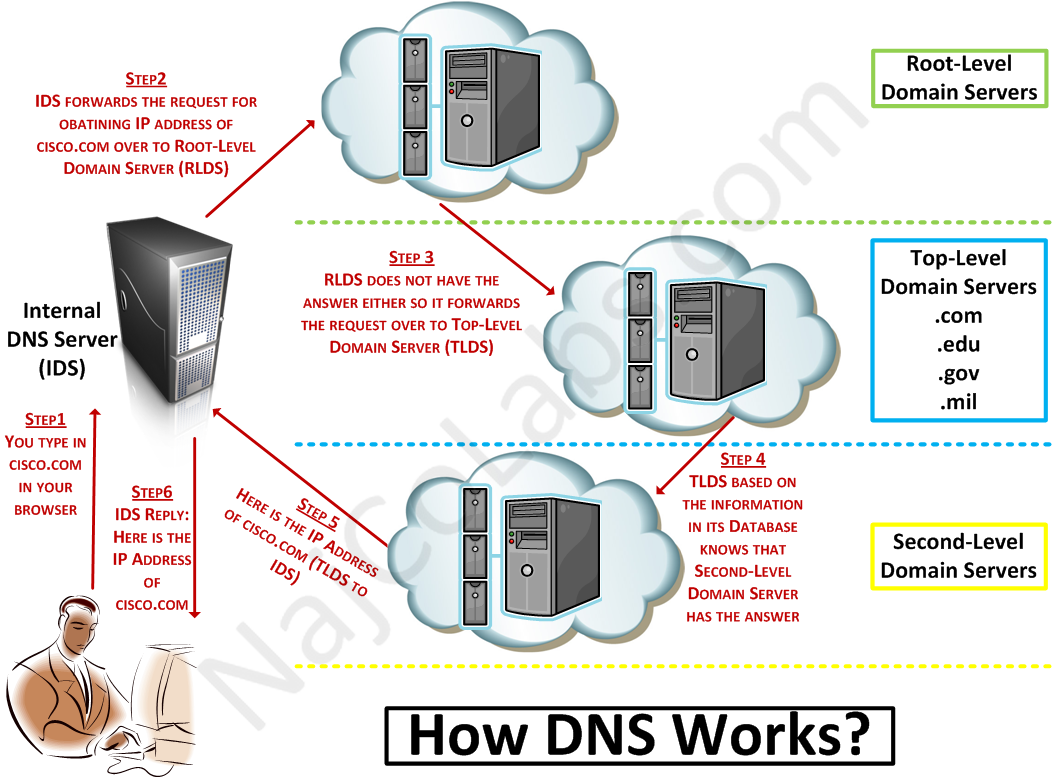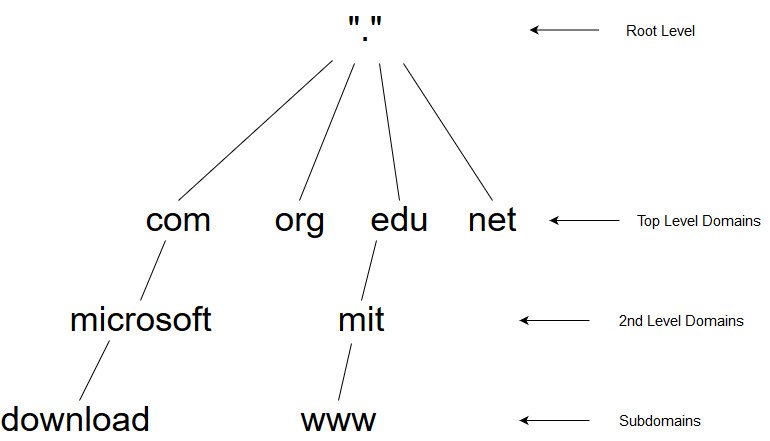Domain Name System (DNS)
The Domain Name System (DNS) translates human readable domain names to machine readable IP addresses. This is a lot similar to a phone book mapping a persons's name to a phone number. When a web address (URL) is typed into a browser, a DNS query is made to learn an IP address of a web server associated with that name. For example www.amazon.com translates to 192.0.2.44.
How does your computer know which DNS server to use?
Usually, when you connect your home network, the modem or router that assigns your computer's network address, also sends network configuration information to your computer. That configuration included one or more DNS servers that the device should use when translating DNS names to an IP address.
Below is a graphic explaining how domain name system servers work:

Here is a breakdown of DNS for www.amazon.com
(www.amazon.com) and an IP address required to locate the www.amazon.com website
DNS servers are connected in a distributed hierarchy. The DNS root zone level are known as root servers. A root server receives a DNS query, which includes a domain name and responds by directing that request to a top-level domain (TLD) nameserver, based on the TLD of that domain (.com, .net, .org). A direct response requests for DNS records in the root zone by returning a list of authoritative TLD name servers that can resolve the initial DNS lookup request for an IP address of that domain name.
